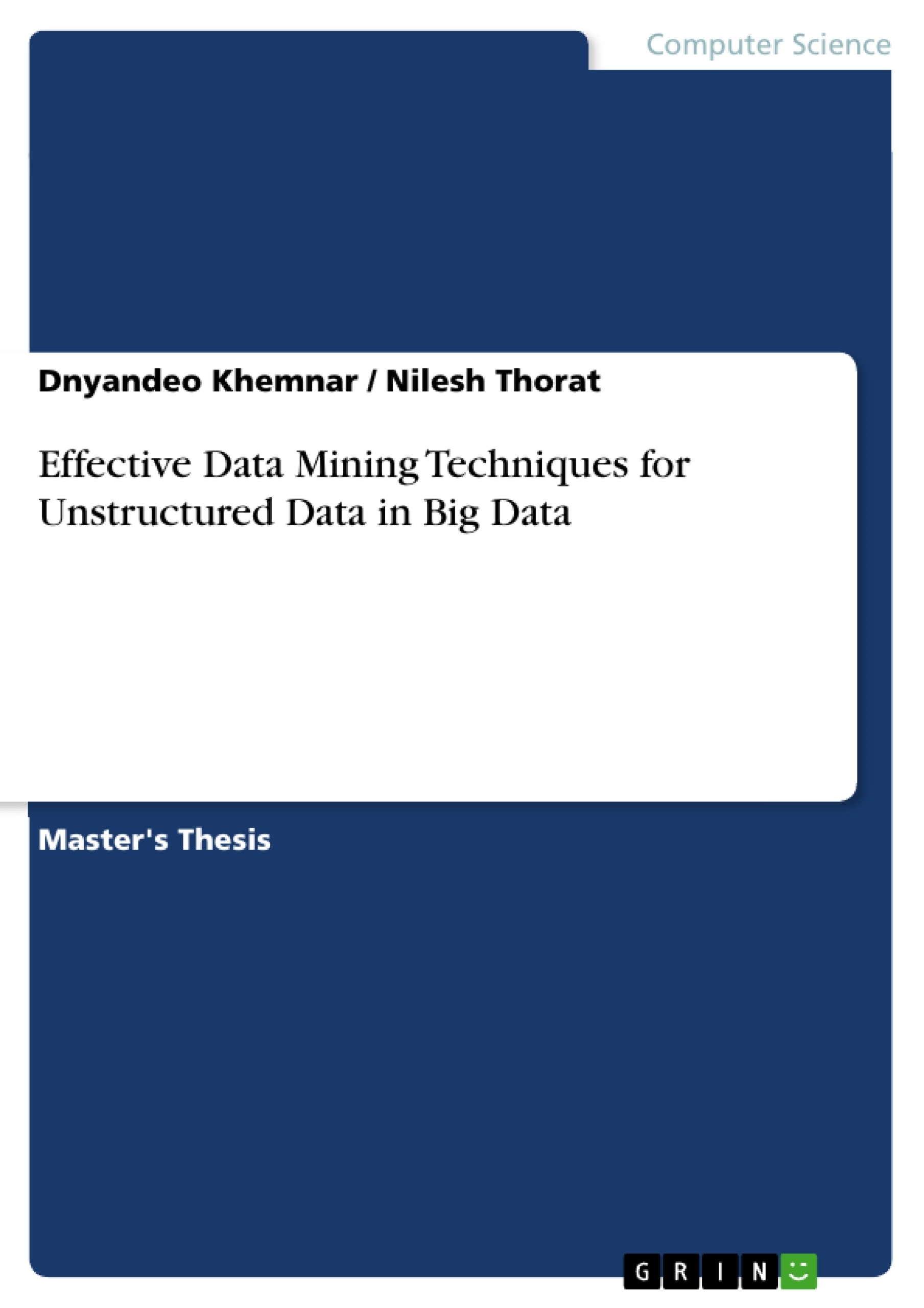In this paper I collect healthcare data, which consists of all the details of the patients' symptoms, disease etc. After the collection of data, there will be pre-processing on all the details of the patients' data, as we need only filtered data for our analysis. The data will be stored in Hadoop. A user can retrieve the data by symptoms, disease etc.
Big Data is a collection of large and complex data. It consists of structured, semi-structured, and unstructured types of data. Data gets generated from various sources and from different fields. In today's era, data is being generated in huge amounts. The whole world is moving towards the digitalization. Social media sites, digital pictures and videos, and many others. All this type of data is known as big data. Data mining is a useful technique for extracting a pattern. This is helpful from large scale data sets. Useful and meaningful data can be extracted from this big data with the help of data mining by processing on that data.
Table of Contents
1. INTRODUCTION
1.1 IDEA AND MOTIVATION
1.2 LITERATURE SURVEY
2. PROBLEM DEFINITION AND SCOPE
2.1 SCOPE
2.2 SOFTWARE CONTEXT
2.3 SOFTWARE CONSTRAINTS
2.4 OUTCOMES
2.5 HARDWARE SPECIFICATION
2.6 S/W SPECIFICATION
2.7 AREA OF DISSERTATION
3. DISSERTATION PLAN
3.1 PROJECT PLAN
3.2 TIMELINE OF PROJECT
3.3 FEASIBILITY STUDY
3.3.1 Economical Feasibility
3.3.2 Technical Feasibility
3.3.3 Operational feasibility
3.3.4 Time Feasibility
3.4 RISK MANAGEMENT
3.4.1 Project Risk:
3.4.2 Risk Assessment
3.5 EFFORT AND COST ESTIMATION
3.5.1 Lines of code (LOC)
3.5.2 Effort
3.5.3 Development Time
3.5.4 Number of People
4. SOFTWARE REQUIREMENT SPECIFICATION
4.1 INTRODUCTION
4.1.1 Purpose
4.1.2 Scope of Document
4.1.3 Overview of responsibilities of developer
4.2 PRODUCT OVERVIEW
4.2.1 Block diagram
4.3 FUNCTINAL MODEL
4.3.1 Flow diagram
4.3.2 Data Flow Diagram
4.3.3 UML Diagrams
4.3.3.1 Sequence diagram
4.3.3.2 Class diagram
4.3.4 Non-Functional Requirements
4.4 BEHAVIORAL MODEL AND DESCRIPTION
4.4.1 Description of software behavior
4.4.2 Use case diagram
5. DETAILED DESIGN
5.1 ARCHITECTURE DESIGN
5.1.1 Algorithms:
5.2 INTERFACES
5.2.1 Human Interface
5.2.2. Database interface
6. TESTING
6.1 INTRODUCTION
6.1.1 Goals and Objective
6.2 TESTING STRATEGY
6.2.1 White Box Testing
6.2.2 Black Box Testing
6.2.3 System testing
6.2.4 Performance testing
7. DATA TABLE AND DISCUSSION
7.1 INPUT TO THE SYSTEM
7.2 OUTPUT:
7.3 PERFORMANCE OF PROPOSED SYSTEM
7.3.1 Performance of proposed system with respect to baseline algorithm:
7.3.2 Performance of proposed system with respect to blowfish encryption algorithm:
7.4 RESULT
7.4.1 Difference between proposed algorithm and base algorithm i.e provider aware algorithm:
8. SUMMARY AND CONCLUSION
8.1 FUTURE ENHANCEMENT
REFERENCES
- Quote paper
- Dnyandeo Khemnar (Author), Nilesh Thorat (Author), 2017, Effective Data Mining Techniques for Unstructured Data in Big Data, Munich, GRIN Verlag, https://www.grin.com/document/1307474
-

-

-

-
Upload your own papers! Earn money and win an iPhone X. -

-
Upload your own papers! Earn money and win an iPhone X. -

-
Upload your own papers! Earn money and win an iPhone X. -

-
Upload your own papers! Earn money and win an iPhone X. -

-
Upload your own papers! Earn money and win an iPhone X. -

-
Upload your own papers! Earn money and win an iPhone X. -

-
Upload your own papers! Earn money and win an iPhone X. -

-
Upload your own papers! Earn money and win an iPhone X. -

-
Upload your own papers! Earn money and win an iPhone X.

